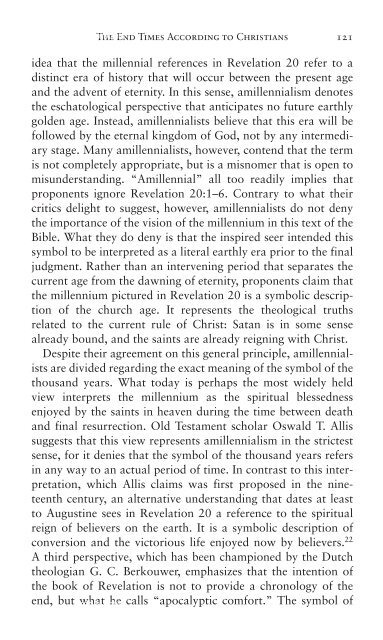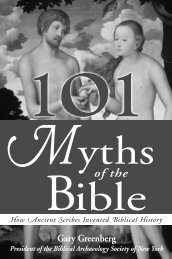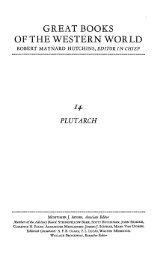Rapture, Revelation, and the End Times - Conscious Evolution TV
Rapture, Revelation, and the End Times - Conscious Evolution TV
Rapture, Revelation, and the End Times - Conscious Evolution TV
You also want an ePaper? Increase the reach of your titles
YUMPU automatically turns print PDFs into web optimized ePapers that Google loves.
obin-bobin The <strong>End</strong> <strong>Times</strong> According to Christians 121idea that <strong>the</strong> millennial references in <strong>Revelation</strong> 20 refer to adistinct era of history that will occur between <strong>the</strong> present age<strong>and</strong> <strong>the</strong> advent of eternity. In this sense, amillennialism denotes<strong>the</strong> eschatological perspective that anticipates no future earthlygolden age. Instead, amillennialists believe that this era will befollowed by <strong>the</strong> eternal kingdom of God, not by any intermediarystage. Many amillennialists, however, contend that <strong>the</strong> termis not completely appropriate, but is a misnomer that is open tomisunderst<strong>and</strong>ing. “Amillennial” all too readily implies thatproponents ignore <strong>Revelation</strong> 20:1–6. Contrary to what <strong>the</strong>ircritics delight to suggest, however, amillennialists do not deny<strong>the</strong> importance of <strong>the</strong> vision of <strong>the</strong> millennium in this text of <strong>the</strong>Bible. What <strong>the</strong>y do deny is that <strong>the</strong> inspired seer intended thissymbol to be interpreted as a literal earthly era prior to <strong>the</strong> finaljudgment. Ra<strong>the</strong>r than an intervening period that separates <strong>the</strong>current age from <strong>the</strong> dawning of eternity, proponents claim that<strong>the</strong> millennium pictured in <strong>Revelation</strong> 20 is a symbolic descriptionof <strong>the</strong> church age. It represents <strong>the</strong> <strong>the</strong>ological truthsrelated to <strong>the</strong> current rule of Christ: Satan is in some sensealready bound, <strong>and</strong> <strong>the</strong> saints are already reigning with Christ.Despite <strong>the</strong>ir agreement on this general principle, amillennialistsare divided regarding <strong>the</strong> exact meaning of <strong>the</strong> symbol of <strong>the</strong>thous<strong>and</strong> years. What today is perhaps <strong>the</strong> most widely heldview interprets <strong>the</strong> millennium as <strong>the</strong> spiritual blessednessenjoyed by <strong>the</strong> saints in heaven during <strong>the</strong> time between death<strong>and</strong> final resurrection. Old Testament scholar Oswald T. Allissuggests that this view represents amillennialism in <strong>the</strong> strictestsense, for it denies that <strong>the</strong> symbol of <strong>the</strong> thous<strong>and</strong> years refersin any way to an actual period of time. In contrast to this interpretation,which Allis claims was first proposed in <strong>the</strong> nineteenthcentury, an alternative underst<strong>and</strong>ing that dates at leastto Augustine sees in <strong>Revelation</strong> 20 a reference to <strong>the</strong> spiritualreign of believers on <strong>the</strong> earth. It is a symbolic description ofconversion <strong>and</strong> <strong>the</strong> victorious life enjoyed now by believers. 22A third perspective, which has been championed by <strong>the</strong> Dutch<strong>the</strong>ologian G. C. Berkouwer, emphasizes that <strong>the</strong> intention of<strong>the</strong> book of <strong>Revelation</strong> is not to provide a chronology of <strong>the</strong>end, but what he calls “apocalyptic comfort.” The symbol ofrobin-bobin





